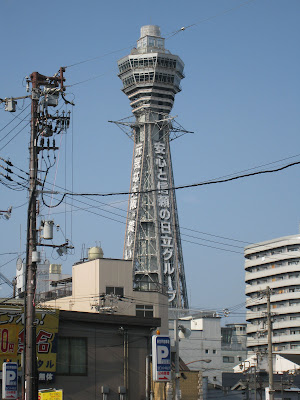(Top: Korean, written in the Korean alphabet. Bottom left: English, written in the Roman alphabet. Bottom middle: Korean, written in Chinese characters. Bottom right: Japanese, written in Chinese characters.)
If you travel, you learn pretty quickly that different countries have different walking habits, and these are generally independent of the side of the road that one drives on. (Sometimes different cities have different habits. I learned that when riding escalators, residents of Tokyo and Osaka stand on different sides, leaving the other side clear for those who prefer to walk on the escalator.) Korea has been a walk-on-the-left culture. But now, suddenly, there were signs and arrows stuck onto every pathway and staircase—not just in the Metro, but in parks, office buildings, nearly any public or semi-public space—urging people to walk on the right. What was going on?
Over the next few days, I gradually realized that a full-scale public campaign was going on. Posters were plastered all over the subway stations, posters like this one:
It says: "Convenient and safe walking on the right! It's the world's, and our, walking culture." Look at all the happy people from around the world, all walking on the right! Say, is that Einstein? I think it is. He's walking on the right too! The man's a genius!
Here's a lovely Korean family making their life a paradise by walking on the right:
What was going on? We believed we'd solved the mystery when we learned that the next G20 meeting is to be held in Seoul. Some government bureaucrat must have woken up in the middle of the night in a cold sweat, contemplating the image of the French ambassador running up the steps out of the Seoul Metro station, late for an important G20 conference on tarrifs, and colliding head-on with a clean-cut Korean family walking on the left. Sacré bleu, would think the Frenchman, these Coréens, they are backward barbarians, unfit for membership in the civilized world.
Could Korea become a civilized nation in only a few months, and be spared the humility of becoming the left-walking laughingstock of the G20? Yes, says the Korean government, Yes we can!
"The Republic of Korea, and the world, both walk on the right!" Note Korea proudly leading the way, with USA, Spain, Canada, France, and all other right-walking nations not far behind.
The funny thing is, of course, that the side one walks on is completely arbitrary. The sign below yet again proclaims that walking on the right is convenient and safe -- but surely walking on the left is also convenient and safe?
Korea is a highly advanced country, with something like the 11th-largest economy in the world. It is a member of the G20. Yet it is still plagued by something of an inferiority complex. Will Korea be taken seriously? Does anyone even know we exist? How can we impress everyone when hosting the G20? The obvious answer is to walk on the right, dammit!
Can you imagine the British engaging in a campaign like this?























.jpg)











































